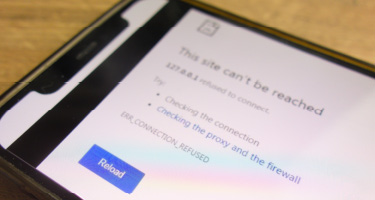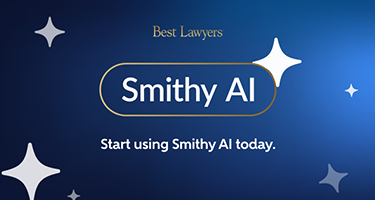INTRODUCTION
I'm an appellate lawyer. Although I sometimes draft dispositive trial court motions, I spend most of my time handling writ petitions and appeals in federal and state courts. That means I’ve reviewed the records for dozens, if not hundreds, of trial court proceedings. The content of those records dictates what issues I can raise for my clients on appeal. Many potentially strong appellate arguments have fallen to the wayside because they were not properly preserved below. The danger of waiver arises frequently with respect to particular issues, with wide variation among state courts as to how particular issues need to be preserved in order to pursue an appeal.
The purpose of this article is to share the lessons I’ve learned from appeals where I couldn’t make our client’s best argument because the issue was not preserved below—or where I was able to defuse the other side’s argument because they failed to preserve it below. The tips below will help create the best possible record, and the broadest possible array of issues, for you, or appellate counsel, to work with on appeal.
Many of the things I discuss will be obvious to some experienced practitioners. But I know that preserving appellate issues is not at the forefront of all litigators’ minds during the heat of battle, and that with fewer and fewer cases going to trial, it’s easy to forget technical points. Hopefully, this article will serve as a refresher course for those who frequently practice in the appellate courts, as well as an introduction for attorneys new to the field.
TRAP 1: AN INCOMPLETE OR UNCLEAR RECORD.
A basic mantra of appellate practice is that if it isn’t in the record it didn’t happen. As one court summed up:
“When practicing appellate law, there are at least three immutable rules: first, take great care to prepare a complete record; second, if it is not in the record, it did not happen; and third, when in doubt, refer back to rules one and two.” Protect Our Water v. County of Merced, 1 Cal. Rptr. 3d 726 (2003).
This rule has many implications. They include:
• Proceedings need to be reported
Most appeals require a written transcript of the relevant trial court proceedings. In most jurisdictions, it used to be a given that all proceedings were recorded/transcribed. Budget cuts have changed that in some jurisdictions. For example, in California’s civil courts, the parties now have to provide their own reporters—and the appellate courts have summarily affirmed appeals by appellants who could not provide a transcript because there was no reporter present.
Tip: Find out in advance whether your court automatically provides a reporter for all proceedings. If it doesn’t, follow the local procedures for arranging a private court reporter.
• Everything important must be on the record
Some judges have a practice of discussing jury instructions, verdict forms, and other issues with counsel in chambers, or resolving objections in sidebars. If there is not a reporter present for these conversations, the appellate court will have no way to know what happened.
Tip: Make sure all your objections are on the record, and that the record reflects which jury instructions and verdict forms you proposed and objected to. If anything notable happens during an unreported sidebar or in chambers, paraphrase it on the record once the reporter is back.
• Witness testimony should be clear to someone outside the courtroom
Descriptions of events that make sense when the jury is watching the speaker—“about this big,” “coming from that direction,” “please compare that document to this one”—are unintelligible to someone who wasn’t there.
Tip: Use words, tell your witnesses to use words, and if they don’t, add something: “Let the record reflect that the witness is indicating about two feet.” “Do you mean moving from left to right?” “Please compare exhibit 23 to exhibit 42.” If the witness is pointing to a diagram or other exhibit, have them physically mark up a copy, and describe on the record what the markings indicate. (“Draw an X where you exited the theater.” “Draw a green line along your path,” etc.)
• Video depositions and other sound recordings played at trial
Court reporters generally do not transcribe video depositions or other recordings played at trial. Unless the party playing the recording puts a separate transcript of the recording in the record, the appellate court will have no way of knowing what was played—and, depending on the standard of review, may infer that it supported the judgment.
Tip: Some jurisdictions have rules requiring the parties to lodge transcripts of video depositions, showing which excerpts were played. E.g., Fed. R. Civ. P. 32(c) (“Unless the court orders otherwise, a party must provide a transcript of any deposition testimony that the party offers, but may provide the court with the testimony in nontranscript form as well”). Even if the court rules in your jurisdiction does not require a transcript, providing one is good practice.
TRAP 2: INVITED ERRORS.
Under the doctrine of invited error, appellants cannot complain of an error they created or invited. See, e.g., Sovak v. Chugai Pharm. Co., 280 F.3d 1266, 1270 (9th Cir. 2002) (A party may not complain “of errors below for which he [or she] is responsible”); McCaig v. Wells Fargo Bank (Texas), N.A., 788 F.3d 463, 476 (5th Cir. 2015) (“‘A party cannot complain on appeal of errors which he himself induced the district court to commit’”). This means that on appeal, you generally will not be able to challenge a jury instruction you requested or acquiesced to, a verdict form you proposed, a procedure that you stipulated to, or evidence to which you said you had no objection.
There is generally an exception to this principle that permits making the best of a bad situation. If the court has definitively ruled against you on an issue, you do not have to dig your heels in and refuse to take any further action on the issue. For example, if you argued that a particular legal theory is inapplicable to the case but the court definitively rules that the theory applies, you may propose a jury instruction on the theory without forfeiting your appellate argument that the theory does not apply. (You could not, however, argue on appeal that your instruction was defective.)
Tip: Carefully check everything you propose to the court; approach stipulations with caution; and if you are relying on the making-the-best-of-a-bad-situation principle, be sure the record reflects the adverse ruling.
TRAP 3: JURY INSTRUCTIONS ISSUES.
Jury instructions are one of the most frequent sources of appellate reversal, in both state and federal courts. Although trial courts have latitude in how to phrase jury instructions, the legal substance of instructions is a question of law and, as a result, has a favorable standard of review for appellants: de novo, with no deference to the trial court’s ruling. In many jurisdictions, an erroneous jury instruction concerning a fundamental claim or defense carries with it a presumption of prejudice. In others, reversal is required if it is reasonably probable—viewing the evidence in favor of the appellant—that a different verdict might have resulted.
Verdict forms present similar issues—special verdict forms in particular are susceptible to reversal because of the possibility of inconsistent findings; incorrect wording on verdict forms may also be an appellate issue.
Here are some guidelines for preserving jury instruction and verdict form arguments for appeal.
• Submitting and advocating for your instructions/verdict form
Parties are entitled to legally correct, non-argumentative instructions on their theories of the case that are supported by evidence. But that standard requires the parties to propose such instructions. Pattern instructions do not always meet this standard—due to delays in updating the pattern instructions, they may not accurately capture evolving law.
The principles discussed above regarding creating a clear record are key when it comes to jury instructions and verdict forms. Although some state and federal courts have very clear guidelines for submitting jury instructions and verdict forms, others take a much more casual approach, with instructions and verdict forms submitted and negotiated right up until the jury is instructed. In cases employing the more casual approach, it can be difficult to determine which party offered a particular version of an instruction or verdict form. This is particularly true where much of the discussion of jury instructions occurs informally off-the-record, so that the only document that appears on the record is the packet of final instructions eventually given to the jury. That lack of clarity is problematic because in some jurisdictions, if the appellate court cannot tell who proposed an instruction or verdict form, it will presume that the appellant did so (and therefore, is constrained by the doctrine of invited error). E.g., Bullock v. Philip Morris USA, Inc., 71 Cal. Rptr. 3d 775, 793-94 (2008).
Tip: Propose a set of complete, accurate, non-argumentative instructions on your theory of the case. If the court refuses to give your proposed instruction or to use your proposed verdict forms, (1) object on the record before the case is submitted to the jury, and (2) do not say anything that could be construed as agreeing that the instruction/form was properly refused. And create a record reflecting who proffered which instructions and verdict forms by submitting your proposals in writing, keeping a conformed copy, and summarizing any off-the-record rulings on the record when the court reporter returns.
• Objecting to the other side’s instructions and verdict forms
There is a wide variation among the states concerning the need to object, and manner of objection, to jury instructions. Some states deem the opposing party to have objected to any instruction submitted by the other side, without need to cite specific grounds. Other states—and federal courts (Fed. R. Civ. P. 51(c))—require a party to make a specific objection as to each contested instruction, or in some instances to offer a substitute, “correct” instruction in order to preserve the right to further review. In the latter case, there can often be a danger of invited error, in that the instruction offered by the objecting party may be just as deficient (albeit in a different way) as that submitted by an opponent. Many jurisdictions also require specific objections, on the record, to the wording of a proposed verdict form. E.g., Yeti by Molly, Ltd. v. Deckers Outdoor Corp., 259 F.3d 1101, 1109 (9th Cir. 2001).
Tip: If you disagree with a proposed jury instruction or verdict form, object on the record before the case is submitted to the jury. In most jurisdictions, objections to a jury instruction must “distinctly” state the matter objected to and the ground for the objection. E.g., Fed. R. Civ. P. 51(c)(1). (Merely submitting an alternative instruction will not preserve an objection unless the district court is aware of the specific concern with the proposed instruction. Grosvenor Properties Ltd. v. Southmark Corp., 896 F.2d 1149, 1152-53 (9th Cir. 1990).) Do not tell the court that an instruction is acceptable if you in fact disagree with it. E.g., United States v. Silvestri, 409 F.3d 1311, 1337 (11th Cir. 2005) (the phrase “‘the instruction is acceptable to us,’” “waive[d] a party’s right to challenge the accepted instruction on appeal”). If there is time, written objections filed with the court create the clearest record.
TRAP 4: EVIDENCE ADMISSIBILITY ISSUES.
Most trial court decisions concerning whether to admit particular evidence are subject to the highly deferential abuse of discretion standard of review, making them tough candidates for appeal. The more rigorous de novo standard applies to evidentiary questions that turn on interpretation of the law (for example, whether evidence falls within a particular privilege)—but such questions are the exception, not the rule.
Still, appellate courts do sometimes reverse even under an abuse of discretion standard, and so it is important to preserve evidentiary issues for appeal. Although jurisdictions vary in exactly what counsel must do to preserve an evidentiary issue for appeal, the general rule is that an appellant cannot challenge the trial court’s admission of, or failure to admit, particular evidence unless the request or objection is clear from the face of the record. The pitfalls here generally involve asserting the correct basis for objecting to evidence, and in making an adequate offer of proof for evidence that the trial court refuses to admit.
• Create a clear record of what exhibits were admitted
The appellate court will want to know specifically what evidence was, and was not, admitted at trial. There can be trouble in this area when an exhibit is introduced for identification by a witness, but never formally moved into evidence. While some courts are good about entering minute orders each day, or at the end of the case, documenting precisely which exhibits have been entered into evidence, others are less formal.
Tip: Be sure to formally move for admission of documents that you are relying on, and that the record (either the transcript or minute orders) reflects the court’s rulings on admission of exhibits.
• Make an adequate offer of proof for evidence the court does not admit
To make a credible appellate argument that particular evidence should have been admitted, it is essential that the appellate court understand what the evidence actually would have been, and why it would have made a difference. But that information can be hard to glean from the record, when the witness did not testify or the document was not admitted. For that reason, most jurisdictions require an offer of proof as to excluded evidence. E.g., Fed. R. Evid. 103(a)(2).
Tips: Make an adequate offer of proof, on the record, as to any evidence that you seek to use but that the court excludes. An offer of proof should (1) describe the proffered evidence in detail (what the witness would testify to, what the document is, etc.) and (2) explain why the evidence supports your position and is necessary in light of other evidence.
• Make specific, on-the-record, objections to the other side’s evidence
Many jurisdictions consider an evidentiary objection waived unless the specific ground for the objection is stated on the record. E.g., Fed. R. Evid. 103(a)(1); see also Pfingston v. Ronan Engineering Co., 284 F.3d 999, 1003-04 (9th Cir. 2002) (evidentiary objections also must be preserved in summary judgment context). It is also critical to make certain that the court definitively rules on the objection. Motions in limine are a trap for the unwary here. Judges will commonly deny pre-trial motions in limine to exclude evidence without prejudice to the objecting party renewing the objection at trial. If the objection is not renewed when the testimony or exhibit is offered, and a ruling obtained, an appellate court might well conclude that the objection was waived. E.g., McCollough v. Johnson, Rodenberg, & Lauinger, LLC, 637 F.3d 939 (9th Cir. 2011); Doty v. Sewall, 908 F.2d 1053, 1056 (1st Cir. 1990). If the in limine ruling is definitive, however, the federal rules do not require renewing the objection or offer of proof. Fed. R. Evid. 103(b).
Tip: Timely object to an exhibit, or move to strike testimony, stating the specific ground—on the record. If you don’t get an immediate, definitive ruling on an objection, make sure to follow up. If there’s any question about whether the ruling is definitive, keep objecting. One objection to keep in mind, in any case involving experts, is foundation: Federal courts in particular tend to scrutinize this issue closely under Daubert v. Merrell Dow Pharms., Inc., 509 U.S. 579 (1993).
TRAP 5: CHALLENGING SUFFICIENCY OF THE EVIDENCE.
Jurisdictions vary widely in what a party must do in the trial court to preserve an appellate argument that the judgment is unsupported by substantial evidence. Some states allow a sufficiency of the evidence appeal without requiring the appellant to have first moved for a directed verdict at the close of the other party’s case, or moved for judgment notwithstanding the verdict (JNOV) after the verdict. Other states will not allow such an appeal unless a party filed a motion for directed verdict specifying the evidentiary failings in the opponent’s case, and then filed a post judgment motion for JNOV, while others take the middle ground of requiring a motion for directed verdict, but not a motion for JNOV. Many states also will not allow an appellate challenge on the ground that damages are either inadequate or excessive, unless a motion for new trial or additur or remittitur was made in, and ruled on, in the trial court.
In federal courts, however, the Supreme Court has made the standard clear: Federal appellate courts will not review a claim that there is insufficient evidence to support the judgment unless the appellant both moved for judgment as a matter of law at the close of evidence under Federal Rule of Civil Procedure 50(a) and renewed the motion after the verdict pursuant to Federal Rule of Civil Procedure 50(b). Ortiz v. Jordan, 562 U.S. 180, 189 (2011); see also, e.g., Parts and Elec. Motors Inc. v. Sterling Elec., Inc., 826 F.2d 712 (7th Cir. 1987) (reversing grant of JNOV because the defendant failed to “identify the point distinctly and specifically in a motion for directed verdict [i.e., a Rule 50(a) motion]”). Both motions are also necessary to preserve summary judgment arguments for appeal, Ortiz, 562 U.S. at 189, and to preserve a qualified immunity defense, Hung Lam v. City of San Jose, 869 F.3d 1077, 1087-88 (9th Cir. 2017).
Tips: In federal court, move for judgment as a matter of law at the close of evidence, before the case is submitted to the jury, and renew the motion after the verdict, and move for a new trial. Fed. R. Civ. P. 50, 59. In state court, check your jurisdiction’s rules.
Originally published in IMLA Municipal Lawyer: The Journal of Local Government Law
March-April 2019 / Vol. 60. No. 02
___________________________________________________________________________________________
Alana Rotter represents public entities in a wide range of cases, including section 1983 suits. She handles all aspects of appeals and writ proceedings, as well as drafting amicus briefs advancing her clients’ institutional interests. She also partners with litigators in the trial court to preserve issues and position cases for appellate success. A graduate of Yale Law School and a former federal appellate clerk, Alana practices in Los Angeles, California at the appellate firm GMSR Appellate Lawyers. She is certified as an appellate specialist by the California State Bar.


















